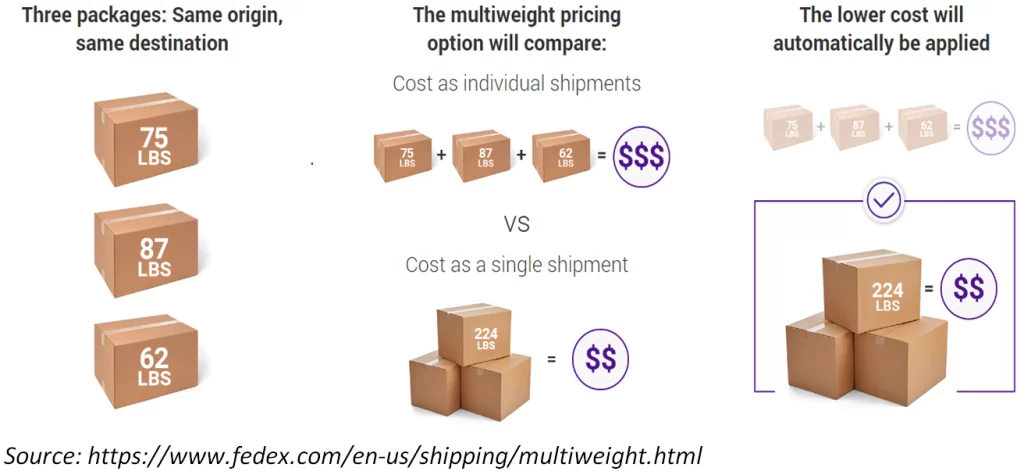1. YOU NEED TO SEND MULTIPLE PACKAGES ON THE SAME DAY
Your best bet is to choose either UPS Hundredweight or FedEx Multiweight if you want to send out smaller products sooner because these shipping options support same-day delivery.
2. YOU ONLY SEND SHIPMENTS TO RESIDENTS OF THE UNITED STATES
Benefits from UPS Hundredweight and FedEx Multiweight are accessible in all 50 US states. If you’re shipping domestically as opposed to internationally, you’ll satisfy both standards.
3. YOUR PACKAGES HAVE A LOWER AVERAGE WEIGHT
UPS Hundredweight and FedEx Multiweight delivery, in contrast to LTL shipping, call for parcels to weigh no more than 150 pounds each and a maximum of 500 pounds for the entire shipment. Because of this, if your company often receives fewer orders or smaller items, it would be worth switching to either of these options rather than LTL.
4. YOUR PACKAGING DOES NOT NEED PALLETIZATION
The majority of heavy-duty shipping services for large shipments require a thorough packaging and dispatching procedure. Packages are shrink-wrapped, fastened with straps, and loaded via a lift gate before being palletized. This process not only takes more time, but it also makes each cargo heavier and more expensive.
The non-palletized nature of UPS Hundredweight and FedEx Multiweight goods makes packing and shipping more efficient. It also implies that, if necessary, you can send a partial delivery.
5. YOU WISH TO VEER AWAY FROM A FIXED DELIVERY SCHEDULE
If your company is small and doesn’t receive a lot of orders, you can opt to forego the set delivery schedule and simply ship orders as they come in. This is made simple with UPS Hundredweight and FedEx Multiweight. These services don’t require you to book shipment times in advance like LTL carriers do. As an alternative, same-day pickup is offered by UPS and FedEx carriers, allowing you to ship your items as soon as they are prepared.
6. YOU’RE SENDING MANY PACKAGES OFF AT ONCE.
The main purpose of these two techniques is to send many parcels to the same location on the same day. But, if you have a range of orders, you can combine them into a single shipment as long as each one complies with the specifications for size and weight.

